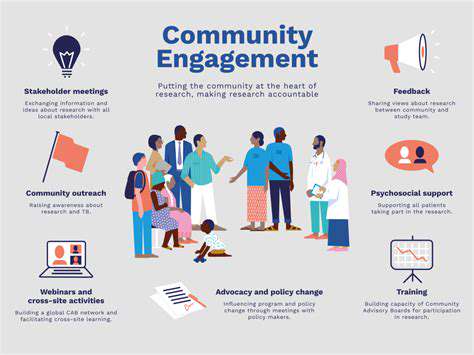
Autonomous Transit: A New Era of Mobility
Defining Autonomous Transit
Autonomous transit, a key component of smart city mobility, involves the use of self-driving vehicles for transportation services. This encompasses a wide range of applications, from autonomous buses and shuttles to self-driving taxis and ride-sharing networks. Crucially, these systems leverage advanced technologies like artificial intelligence, sensor fusion, and sophisticated algorithms to navigate and operate vehicles safely and efficiently, leading to potentially revolutionary changes in urban transportation.
The ultimate goal of autonomous transit is not merely to replace human drivers, but to optimize the overall transportation network. This includes improving traffic flow, reducing congestion, and enhancing accessibility for all citizens, especially those with mobility limitations. It's about creating a more seamless and efficient system for moving people and goods within a city.
The Role of IoT in Autonomous Transit
The Internet of Things (IoT) plays a critical role in the success of autonomous transit systems. A multitude of sensors embedded in vehicles, infrastructure, and even the surrounding environment collect vast amounts of data. This data, ranging from real-time traffic conditions to environmental factors, is processed and analyzed in real-time to ensure vehicles operate safely and efficiently. The interconnected nature of IoT allows for proactive maintenance, dynamic route adjustments, and improved passenger experience.
This intricate network of interconnected devices facilitates crucial communication between vehicles, infrastructure, and even passengers, paving the way for a more responsive and adaptable transportation system.
5G Connectivity for Enhanced Performance
5G technology is crucial for the real-time communication demands of autonomous transit. The high bandwidth and low latency capabilities of 5G enable vehicles to communicate with each other and with central control systems with unprecedented speed and reliability. This is essential for coordinating movement, avoiding collisions, and responding to unexpected events in a timely manner. This enhanced communication is the backbone of a truly responsive and efficient autonomous transportation system.
Safety and Security Considerations
Ensuring the safety and security of autonomous transit systems is paramount. Rigorous testing, validation, and safety protocols are essential to mitigate risks. This includes developing robust algorithms for handling unexpected situations, ensuring vehicle reliability, and maintaining secure communication channels to prevent unauthorized access or manipulation. Continuous monitoring and evaluation are crucial for ongoing improvement.
Impact on Urban Planning and Design
Autonomous transit systems have the potential to reshape urban planning and design. Optimized routes, reduced congestion, and improved accessibility can transform the way cities are built and utilized. Urban planners can leverage data generated by autonomous vehicles to create more efficient and sustainable transportation networks. This includes re-imagining streetscapes, creating dedicated lanes, and redesigning public spaces to accommodate the unique characteristics of autonomous transit.
Economic and Societal Implications
The adoption of autonomous transit systems has significant economic and societal implications. It can potentially reduce traffic congestion, decrease commute times, and improve the overall quality of life for citizens. Reduced operating costs for transit agencies and increased efficiency in resource utilization are also possible outcomes. However, the transition to autonomous transit also raises concerns about job displacement and the need for new skills in the workforce. Careful planning and proactive measures are needed to address these potential challenges.
Future Trends and Innovations
The future of autonomous transit is filled with exciting possibilities. Advancements in AI, sensor technology, and communication systems will further enhance the capabilities and safety of these systems. Integration with other smart city technologies, such as smart parking and real-time traffic management systems, will create a truly integrated and efficient mobility ecosystem. Further research and development in areas like autonomous trucking and delivery systems will broaden the impact of this technology on society.
The Future of Smart City Mobility: Interconnected and Intelligent

Autonomous Vehicles: Revolutionizing Urban Transportation
Autonomous vehicles (AVs) are poised to fundamentally reshape urban mobility, offering the potential for increased efficiency, reduced congestion, and enhanced safety. Their ability to navigate streets without human intervention promises to streamline transportation networks, potentially leading to significant reductions in traffic accidents and fuel consumption. AVs can also optimize routes, adjust to real-time traffic conditions, and potentially increase the overall capacity of existing road infrastructure.
Beyond the immediate benefits, AVs could transform the way cities are designed and built. The elimination of the need for parking spaces, for example, could free up valuable urban land for other uses, such as parks, commercial spaces, or residential developments. This could lead to more vibrant and adaptable urban environments.
Integrated Public Transportation Systems: Seamless Connections
A critical component of future smart city mobility will be the development of seamless and integrated public transportation systems. This involves connecting various modes of transport, such as buses, subways, trams, and even bike-sharing programs, through a unified platform. This integrated approach will improve accessibility and reduce travel times for citizens, fostering a more efficient and user-friendly transportation experience.
Smart Infrastructure: Enabling Mobility Solutions
The backbone of any smart city mobility strategy lies in the development of smart infrastructure. This encompasses real-time traffic monitoring systems, intelligent traffic signals, and advanced sensor networks. These technologies can dynamically adjust traffic flow, optimize route planning, and provide real-time updates to commuters, reducing delays and enhancing overall mobility.
Advanced infrastructure allows for the integration of data from various sources, such as GPS tracking, sensor networks, and public transport schedules. This integrated data stream is crucial in enabling effective management and optimization of urban mobility.
Pedestrian and Cycling Infrastructure: Encouraging Active Transportation
A critical aspect of smart city mobility often overlooked is the development of robust pedestrian and cycling infrastructure. Encouraging active transportation through dedicated pathways, bike lanes, and pedestrian crossings contributes to a healthier and more sustainable urban environment. Prioritizing these modes of transport not only reduces reliance on automobiles but also improves public health and reduces environmental impact.
Data Analytics and AI: Optimizing Mobility Operations
The effective deployment of smart city mobility solutions relies heavily on data analytics and artificial intelligence (AI). AI algorithms can analyze vast amounts of data from various sources to predict traffic patterns, optimize transportation routes, and improve resource allocation. This data-driven approach is crucial for creating dynamic and adaptable mobility systems that respond to real-time changes and user demands.
Advanced predictive modeling using AI can anticipate potential traffic congestion and proactively adjust traffic signals or public transport schedules to mitigate delays. This real-time optimization is essential for efficient and responsive urban mobility systems.
The Role of Shared Mobility: Enhancing Accessibility
Shared mobility services, such as car-sharing programs and ride-hailing apps, play a vital role in enhancing accessibility and flexibility for urban dwellers. These services offer an alternative to owning a personal vehicle, reducing parking demands and promoting sustainability. The integration of shared mobility services with public transportation networks will create more comprehensive and accessible transportation options for citizens.
Addressing Equity and Accessibility: Ensuring Inclusivity
The implementation of smart city mobility solutions must prioritize equity and accessibility to ensure that all citizens benefit from these advancements. This includes considering the needs of individuals with disabilities, the elderly, and low-income communities. Implementing accessible and affordable mobility options is essential for fostering a truly inclusive and equitable urban environment. This involves ensuring that public transportation and shared mobility services are readily available and accessible to all segments of the population.











